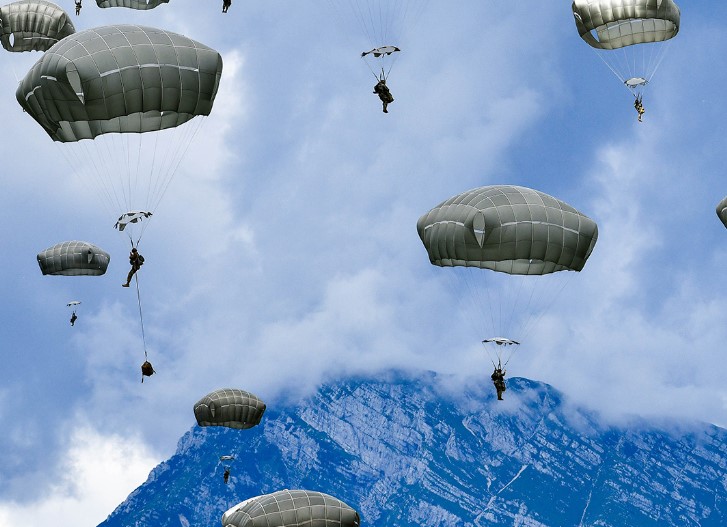On the one hand we have the Russian-Ukrainian conflict, now in its twentieth month, and on the other hand the Hamas-Israel conflict, which is becoming increasingly bloody.
At times like these, Western states can rely on their military if only for purposes of military and political deterrence: the larger an army, the smaller the risk of aggression.
Europe is no different, even there are EU countries that boast an arsenal that is impressive, to say the least, when compared to their GDP.
Table of Contents
Which state has the most powerful military in Europe
No one would ever believe that Poland, a country with a population of more than 37.75 million, could have what is for all intents and purposes the most powerful army in Europe.
For the next few years, the size of the Polish armed forces will double from 143,000 to 300,000 effective soldiers.
In the case of professionals and volunteers, the number would increase within 12 years from 111,500 to 250,000 for professionals, and from 32,000 to 50,000 for volunteers. That is 12,000 more soldiers each year to be recruited and trained.
If it succeeds, by 2035 Poland would have the strongest army in Europe, superior even to France and Germany.
As of today, 2023, by military numbers the strongest European army would be that of Italy, which has 248,000 personnel. Compared with 205,000 French, 194,000 British, and 184,000 German. But none of these want to double their military personnel.
The reason why a country like Poland, with GDP around $679.4 billion, wants to become the flagship of Europe is because of the resurgence of the Russian-Ukrainian conflict.
Not surprisingly, the Polish Parliament passed the Ustawa o obronie Ojczyzny, the Homeland Defense Law, with the aim of countering “Russia’s imperial ambitions.” This law would make Poland the country with the highest expenditure-to-GDP ratio among NATO states: 4 percent, compared to the average of 2.57 percent.
It is no coincidence that in the 2023 Budget, Defense plans to spend 97.4 billion zloty, about 20 billion euros. In addition to the army, the 20 billion will be used to buy hundreds of tanks and heavy artillery from the United States and South Korea, as well as air defense systems, rocket launchers, and fighter planes.
Among the largest expenditures is the purchase of 288 units of the South Korean equivalent of the U.S. M270. Plus 1,400 new tanks including 366 U.S. Abrams and 1,000 South Korean K2 Panther tanks. Not inexpensive tanks. Their price tag borders that of the tanks sent to Ukraine.
The ranking of the 3 strongest armies in the world
It must be said that Poland and Italy, and so all other European countries, cannot compare with armies such as the Chinese, Russian and American armies.
As for China alone, the world’s third most powerful army according to the think tank Global Fire Power, we are talking about more than 2,185,000 personnel. Not counting reservists and paramilitaries. But compared to America, China has spent “only” $293 billion on upgrading its entire military. Or 14 percent of world spending.
In contrast, the United States was the country with the highest military spending in the world. Thus accounting for 38 percent of the entire sector, about $738 billion. And this is despite having 1,388,100 personnel, about 370,000 more than Russia.
But both stand above China in having modernized its arsenal in previous years. Suffice it to say that the U.S. wants to allocate a good chunk of its GDP to armaments again this year, at 3.47 percent.
Special note to Russia, which despite the damage from “special operation” has managed to secure military spending of $60.6 billion for 2023. Very little compared to the U.S. and China, but as much as three times that of Poland.
The ranking of European military powers
Removing Poland, as already mentioned, the first by permanent military force in Europe is Italy. It counts 248,000 personnel and a total military personnel of 267,000, with only 20,000 being reserve forces. Number that could possibly go up, given all these contests for the Armed Forces.
Second at present is France, with 204,000 personnel. Although its military power is reinforced by ballistic missile submarines and an independent nuclear deterrent. Plus reservists, which total 183,000.
Germany is in third position, with only 180,000 personnel and 30,000 reservists. But it enjoys a solid industrial base and the primacy of building the legendary Leopard 2s.
Fourth position is occupied by Greece. It has 162,000 military personnel, but in return it boasts the highest military spending in relation to GDP in Europe. Namely 6.5 billion out of 214.9 billion GDP.
Further down we have the United Kingdom. With 232,000 personnel between the Royal Air Force and Navy, and with a reserve strength of 81,500. As a force it is used to the maximum for national security, as well as for coalition operations in NATO.
Armies can be very useful if there are military superpowers threatening peoples’ security. Although the bulk of the war is now on the Web, between ransomware and cyber attacks on government databases.
The question is what would happen if more violent deterrents, such as the atomic bomb, were aimed at instead of armed forces. However expansive one’s military might be, an atomic bomb has no equal.
Read also: Military service, the countries where it is compulsory in 2023












